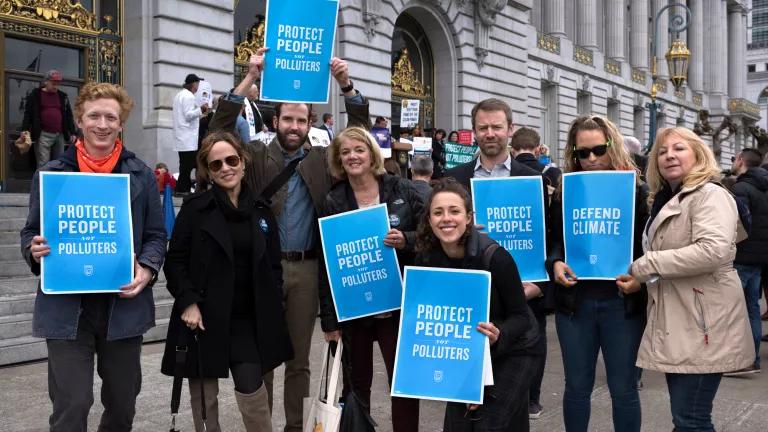Last December over 190 countries that account for over 95 percent of the world’s climate pollution agreed to a historic new international agreement to address climate change. They are now taking the next step when they meet to sign the Paris Agreement in New York. The standing ovation for the Paris Agreement will now be translated into a clear intent to deliver as countries sign on the bottom line.
On Earth Day more than 150 countries are expected to sign the agreement. They will signify their intent to formally join the agreement as they take the necessary domestic steps to become formal members of the Paris Agreement. Some countries will take this opportunity to also formally join the agreement as they have taken their necessary domestic steps to join such an international legal agreement. Other countries – such as the U.S., China, and Canada – have signified their intent to join the agreement this year. And I expect that more countries will outline their timing for formally joining the agreement when they meet in New York.
Once 55 countries that account for more than 55 percent of the world’s emissions have formally joined the agreement it will enter into force (here is a cheat sheet to keep track of where things stand as we approach these thresholds). To date, countries that account for 38 percent of the world’s emissions have formally announced that they will join this year. And there are public signs that more countries will join the agreement this year. These signals significantly increase the chance that the agreement will enter into force this year. After all, who wants to be the last one to join this historic climate agreement?
As countries have been taking steps to formally join the Paris Agreement, they have also been implementing the necessary domestic climate actions to deliver on their national climate commitments. Almost every country in the world announced national climate action plans that they will implement as a part of the Paris Agreement. To meet these national plans, countries will need to take additional steps in the coming months and years.
We are already seeing some promising signs that countries are continuing to build a clean energy economy that reduces their carbon pollution, spurs jobs, drives down air pollution, and helps meet other pressing domestic needs. The U.S. continues to see an electricity sector transformation that is witnessing more wind and solar, increases in clean energy jobs, and less carbon pollution. China has seen its coal consumption drop for the second year in a row, which is helping to reduce its total carbon dioxide emissions in 2015 below the previous year. India is building more wind and solar and helping to spur smarter cities that use less energy. Chile continues to see a huge solar boom and Mexico is finally moving forward with new policies to tap into their massive renewable energy potential.
Following from the Paris Agreement, countries continue to take the necessary steps to translate their commitments into new actions to reduce emissions. More will be needed in the coming months and years, but we have seen a very positive first couple of months after the Paris Agreement was finalized.
Here is to a good celebration of the historic Paris Agreement in New York as countries show that they continue to be committed to stronger climate action in the coming years.




